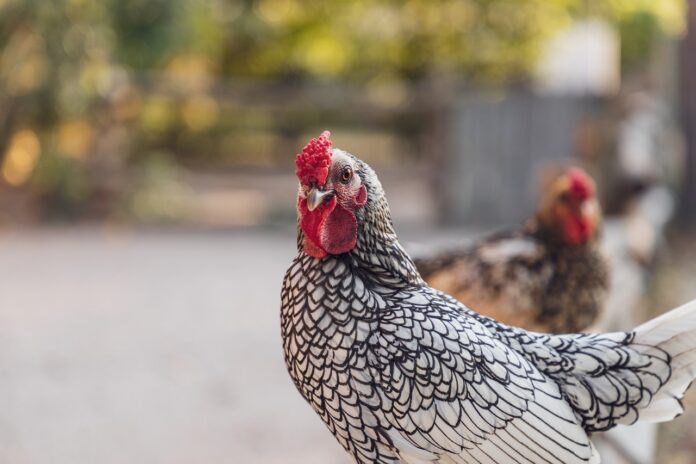Chicken math is not like ordinary math. It’s more like a pesky word problem with a nonsensical answer. It begins with owning six or so chickens which are cute and practical, providing eggs and entertainment daily.
A little adding and subtracting along with multiplying results in a multi-generation flock with a few other animals thrown in just because it seemed like a good idea at the time.
In our family, it all started with Bock-Bock, our first hen that didn’t mind being carried around for hours. Then, suddenly there was a big flock of chickens and other unexplained creatures on the farm like turkeys, guineas, peacocks and occasionally a steer for beef.
In our case, Bock-bock raised Hermoine, and then there were many generations of chickens without names running amok.
Having chickens has many rewards including reducing our amount of waste. They eat most of our table scraps, especially enjoying the fruit. Our chickens were free to roam, eating many bugs in our yard and the surrounding area.
We had to move them to a fenced area after a ruthless coyote attack. Also, too many animals didn’t mix with a desire to travel the country, so we started to thin the flock. Thinning the flock worked just fine in 2017 when egg prices plummeted to around a dollar for a dozen.
Bird flu
This was following the egg crisis in 2015 when 50.5 million birds died in response to avian influenza, bird flu. It was the summer when 4-H participants had to keep their birds at home; poultry was not permitted at county fairs.
In contrast, the current bird flu situation has affected over 57 million poultry including chickens, ducks and turkeys. Cases have been reported in all but three states in the United States. The CDC reports that infection of the brutal influenza kills 90-100% of chickens in as little as 48 hours.
Avian influenza usually appears during spring migration. However, the current bird flu broke out in September. Experts are predicting the high cost of eggs could last into the last quarter of 2023. The price is also dependent on rising feed and fuel prices.
The market price of chicken at grocery stores is not showing the same inflation. The cost of broilers is not affected at the same rate due to meat chickens reaching maturity faster. Broilers can be ready for slaughter in about 7-9 weeks whereas laying hens need around five months to reach egg-laying maturity.
Breeds
Our previous backyard flock of layers was made up of Columbian wyandottes. The breed was chosen due to its hardiness in cold and heat and also because of its mild temperament.
Columbian wyandottes came onto the egg-laying scene at the World Fair in Chicago in the late 1800s, purely an American breed. With fluffy white feathers, a round body and a rose comb, they are quite attractive birds.
Back in August, we added prairie bluebelle eggers to our flock.
A mix of a white leghorn hen and an araucana rooster, prairie bluebell eggers lay unique blue eggs. It is a hybrid introduced in Hoover’s Hatchery catalog in 2019 and trademarked in 2021. At maturity, they will be around 4 pounds, laying medium-sized eggs.
Our birds are living up to the hype of being “active and docile.” We’re banking on a healthy hen laying 240 eggs a year. Our chicken math became complicated again when we realized one of the hens was actually a rooster! Oops!
The blue egg color is a result of two dominant genes. Since they are a hybrid breed, any offspring would have less likelihood of laying blue eggs. However, at this point in our economy, any eggs are considered gold!
Our grocery bill has me walking on eggshells, but I am hopeful our new hens will amp up production soon. We have to protect our nest egg in case of future inflation.
Thankfully, my husband made an eggcellent choice in August to purchase chicks. I won’t be placing all my eggs in the same basket but will continue to seek self-sufficiency in our current economy.

















Great article..love the prairie bluebells. They lay alot .Also love the large eggs from the Sapphire gems. Just got a white wyandotte hen who just started laying. Yea its January. Great article, well written. Happy Nesting and Gardening from Colorado..Jr